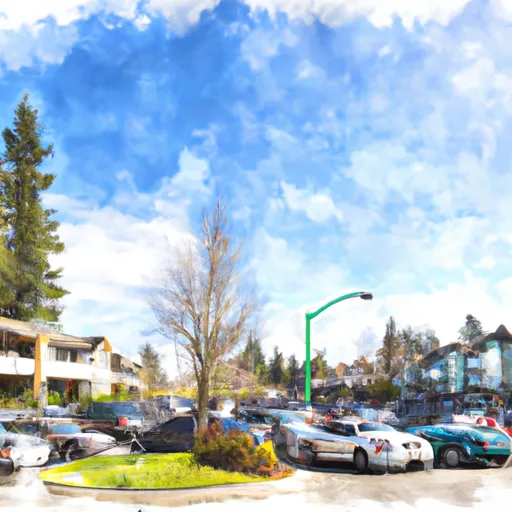-
 Snoflo Premium
Snoflo Premium
Get unlimited access to all our content
With no Ad interruptions! - Start Your Free Trial Login with existing account
Lynnwood
Eden Index
Climate
8.1
•
Recreation
2.8
•
Community
3.8
•
Safeguard
5.1/10

Lynnwood, Washington is located in Snohomish County and is part of the Seattle metropolitan area. The city has a temperate climate with mild, wet winters and warm, dry summers. The average annual rainfall is around 40 inches, which contributes to the lush greenery and beautiful landscapes of the region.
Lynnwood is surrounded by stunning natural beauty, including several rivers and lakes. The hydrology constituents in the area include the Puget Sound, which is known for its diverse marine life and recreational opportunities such as fishing, boating, and wildlife viewing. The nearby Lynnwood Creek and Swamp Creek offer additional opportunities for outdoor activities like kayaking, paddleboarding, and hiking along their scenic trails.
For outdoor enthusiasts, Lynnwood is a gateway to numerous parks and trails. One popular destination is Meadowdale Beach Park, where visitors can explore forested trails, enjoy picnicking areas, and relax on the sandy beach along Puget Sound. Lynnwood also provides easy access to the Cascade Mountains, offering opportunities for hiking, camping, skiing, and snowboarding during the winter months.
Overall, Lynnwood, Washington provides a pleasant climate, diverse hydrology constituents, and a range of outdoor recreation opportunities for nature lovers and adventurers alike.
What is the Eden Index?
The Snoflo Eden Index serves as a comprehensive rating system for regions, evaluating their desirability through a holistic assessment of climate health, outdoor recreation opportunities, and natural disaster risk, acknowledging the profound impact of these factors on livability and well-being.
Climate Health Indicator (CHI): 8.1
Lynnwood receives approximately
982mm of rain per year,
with humidity levels near 82%
and air temperatures averaging around
11°C.
Lynnwood has a plant hardyness factor of
8, meaning
plants and agriculture in this region tend to thrive here all year round.
By considering the ideal temperature range, reliable water supplies, clean air, and stable seasonal rain or snowpacks, the Climate Health Indicator (CHI) underscores the significance of a healthy climate as the foundation for quality living.
A healthy climate is paramount for ensuring a high quality of life and livability in a region, fostering both physical well-being and environmental harmony. This can be characterized by ideal temperatures, reliable access to water supplies, clean air, and consistent seasonal rain or snowpacks.
Weather Forecast
Streamflow Conditions
Puget Sound
Area Rivers
Puget Sound
Snowpack Depths
Puget Sound
Reservoir Storage Capacity
Puget Sound
Groundwater Levels
Recreational Opportunity Index (ROI): 2.8
The Recreational Opportunity Index (ROI) recognizes the value of outdoor recreational options, such as parks, hiking trails, camping sites, and fishing spots, while acknowledging that climate plays a pivotal role in ensuring the comfort and consistency of these experiences.
Access to outdoor recreational opportunities, encompassing activities such as parks, hiking, camping, and fishing, is crucial for overall well-being, and the climate plays a pivotal role in enabling and enhancing these experiences, ensuring that individuals can engage in nature-based activities comfortably and consistently.
Camping Areas
| Campground | Campsites | Reservations | Toilets | Showers | Elevation |
|---|---|---|---|---|---|
| Wenberg County Park | 75 | 408 ft | |||
| Kayak Point Regional Park | None | 8 ft | |||
| River Meadows County Park | None | 202 ft |
Nearby Ski Areas
Catastrophe Safeguard Index (CSI):
The Catastrophe Safeguard Index (CSI) recognizes that natural disaster risk, encompassing floods, fires, hurricanes, and tornadoes, can drastically affect safety and the overall appeal of an area.
The level of natural disaster risk in a region significantly affects safety and the overall livability, with climate change amplifying these risks by potentially increasing the frequency and intensity of events like floods, fires, hurricanes, and tornadoes, thereby posing substantial challenges to community resilience and well-being.
Community Resilience Indicator (CRI): 3.8
The Community Resilience Indicator (CRI) recognizes that education, healthcare, and socioeconomics are crucial to the well-being of a region. The CRI acknowledges the profound impact of these elements on residents' overall quality of life. By evaluating educational resources, healthcare accessibility, and economic inclusivity, the index captures the essential aspects that contribute to a thriving community, fostering resident satisfaction, equity, and social cohesion.

